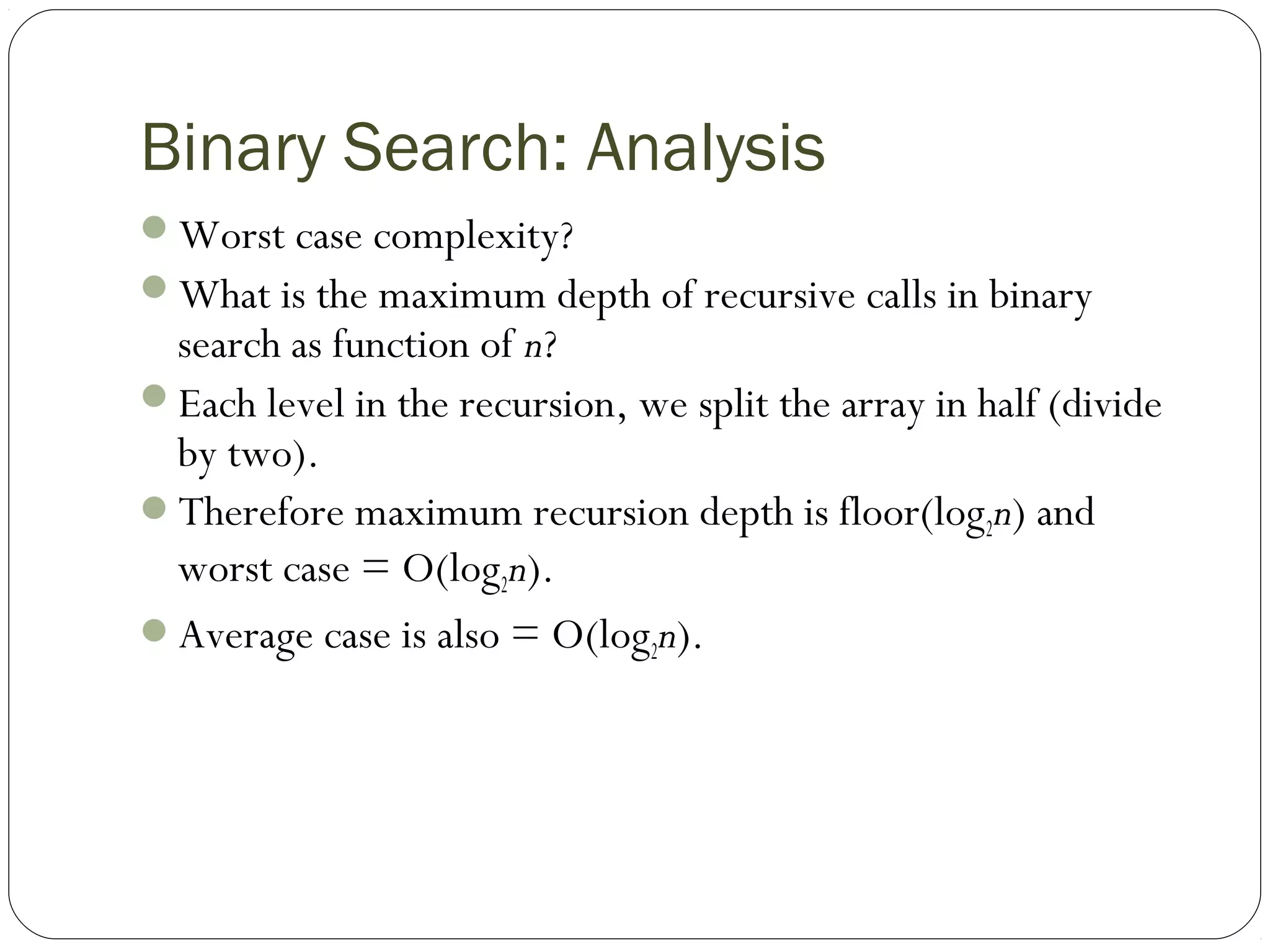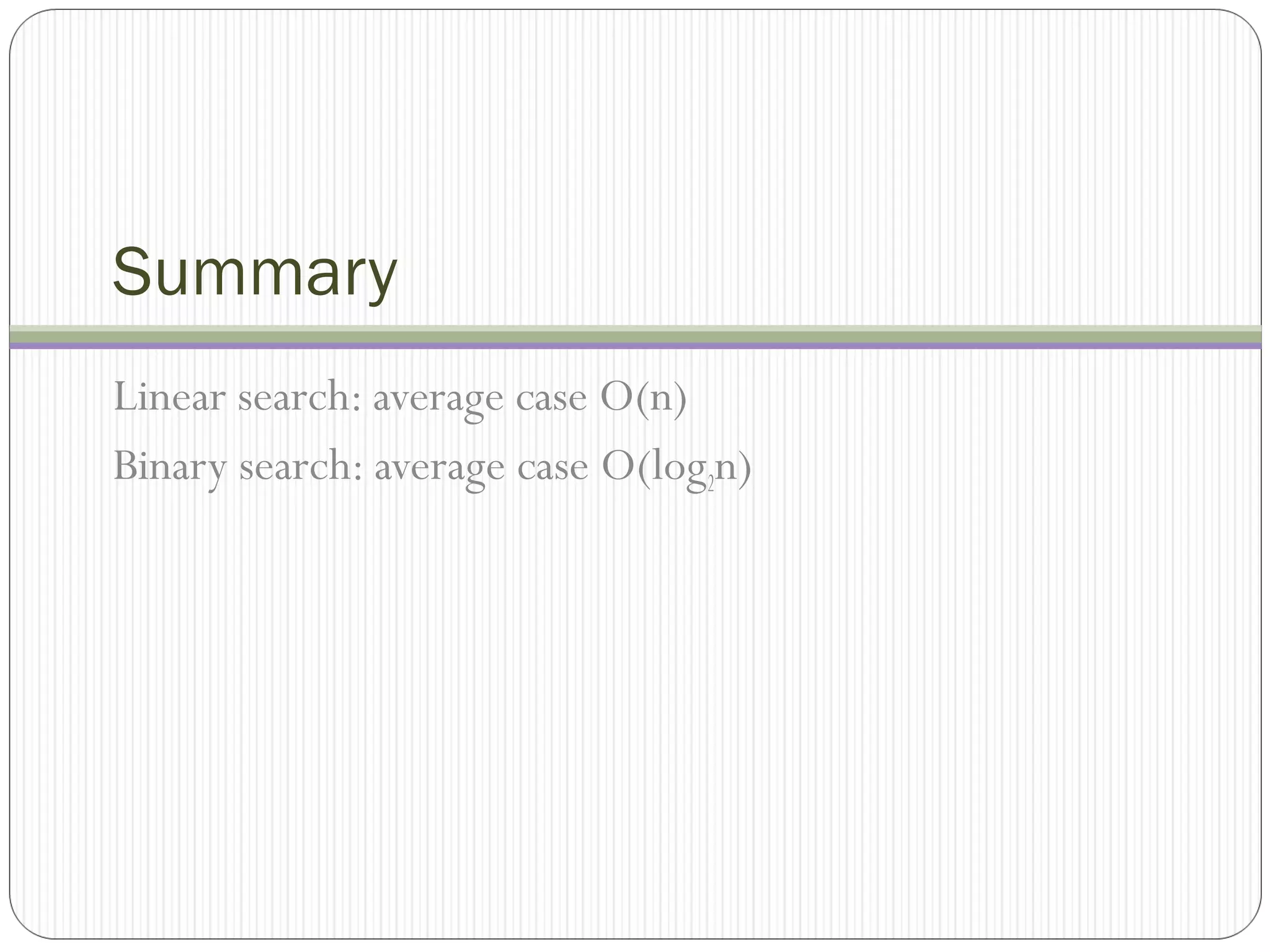The document discusses linear and binary searching algorithms, explaining how linear search checks each element in an array sequentially, with an average time complexity of O(n), while binary search operates on sorted arrays and divides the search space in half, yielding an average time complexity of O(log2n). It describes the worst and average case scenarios for both search methods. Overall, linear search is less efficient than binary search for larger datasets.
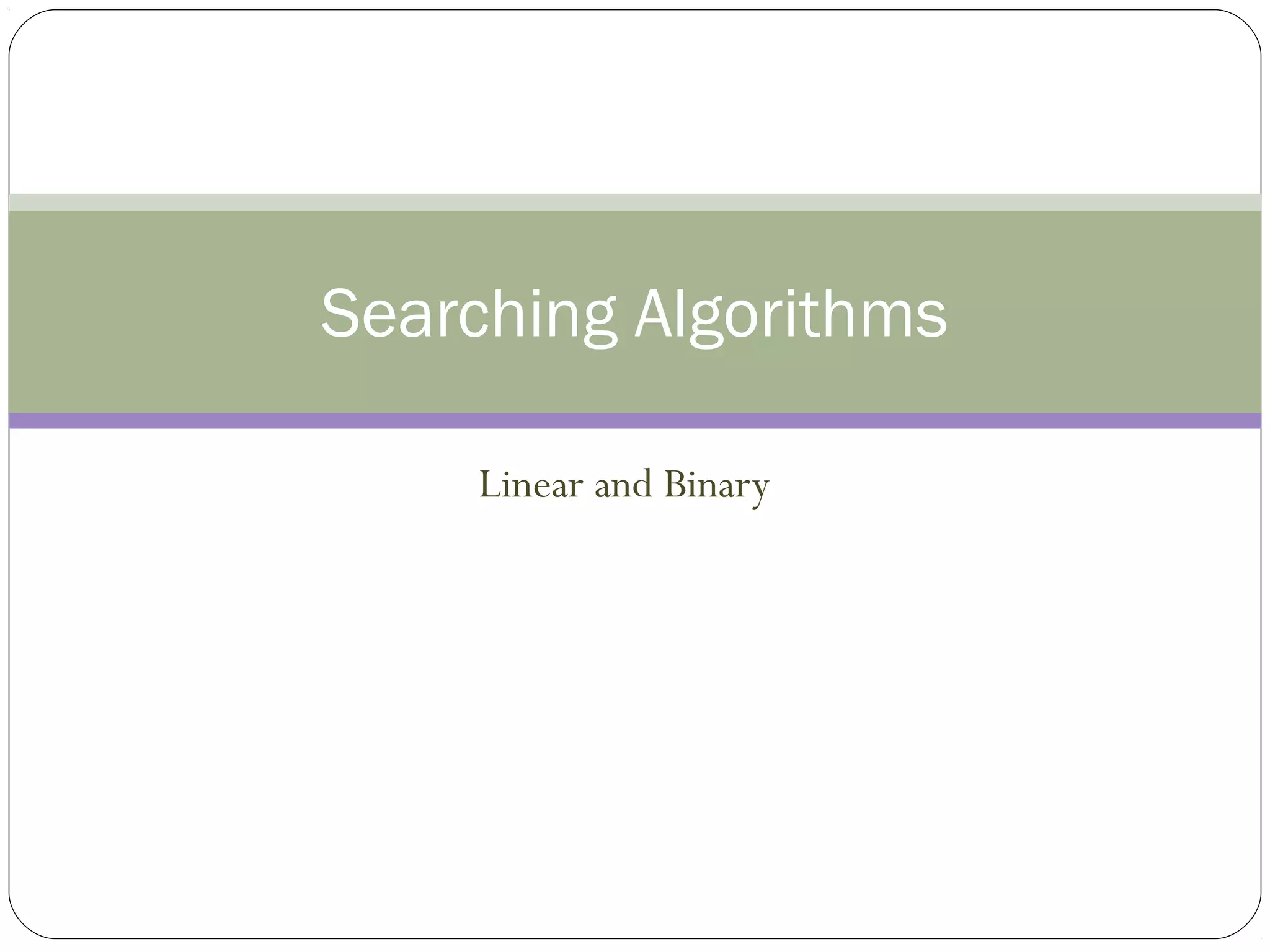
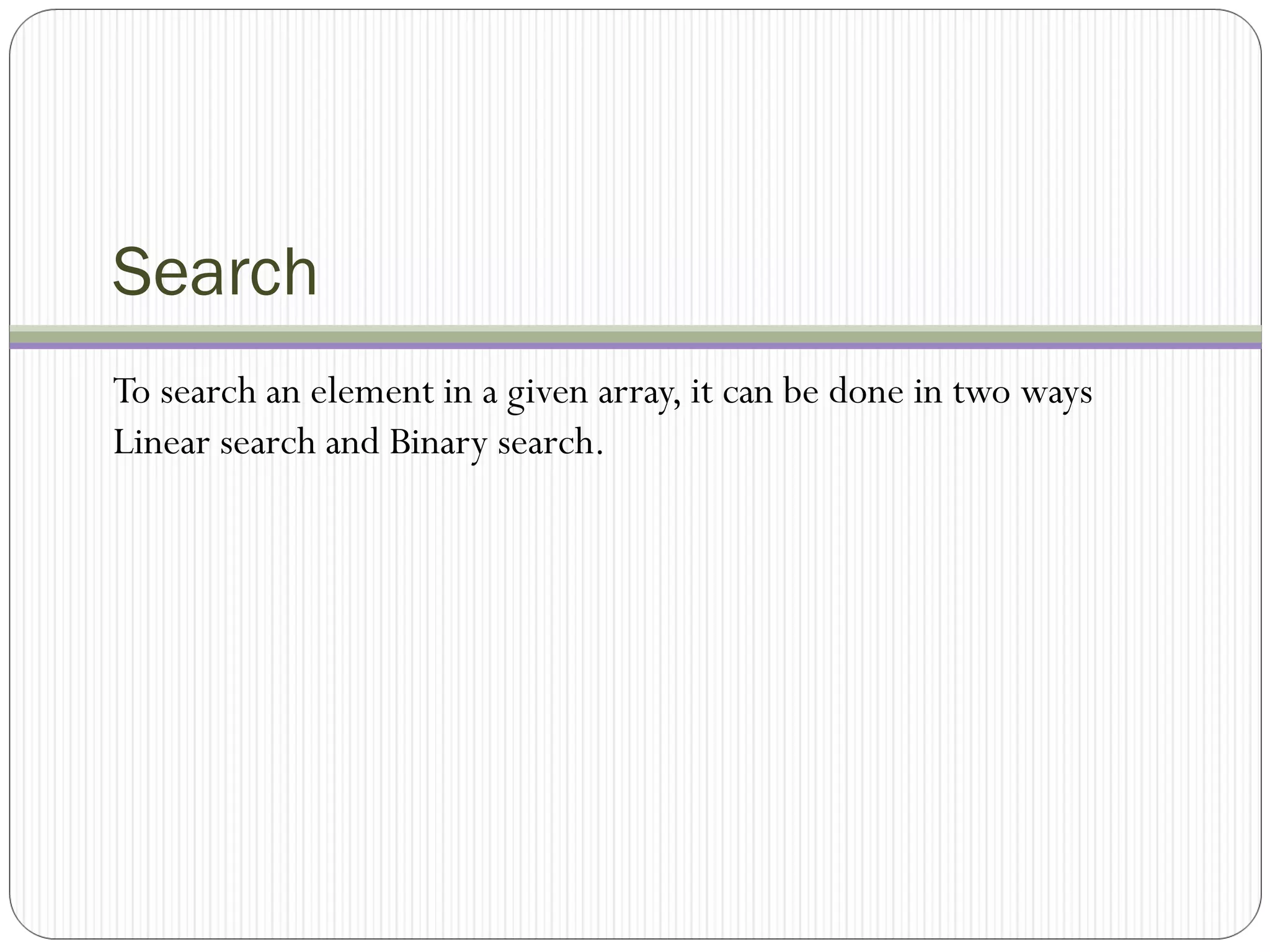
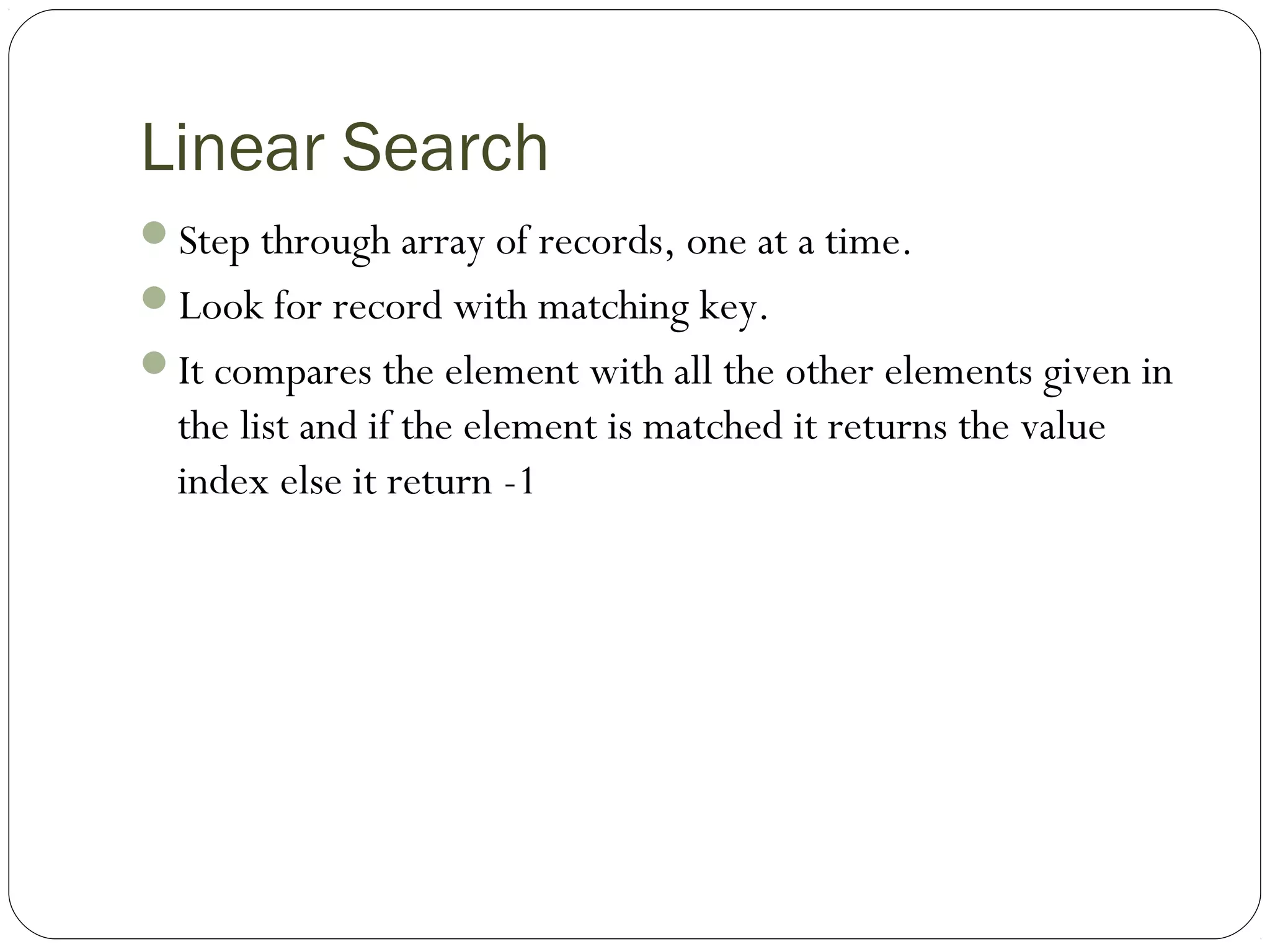
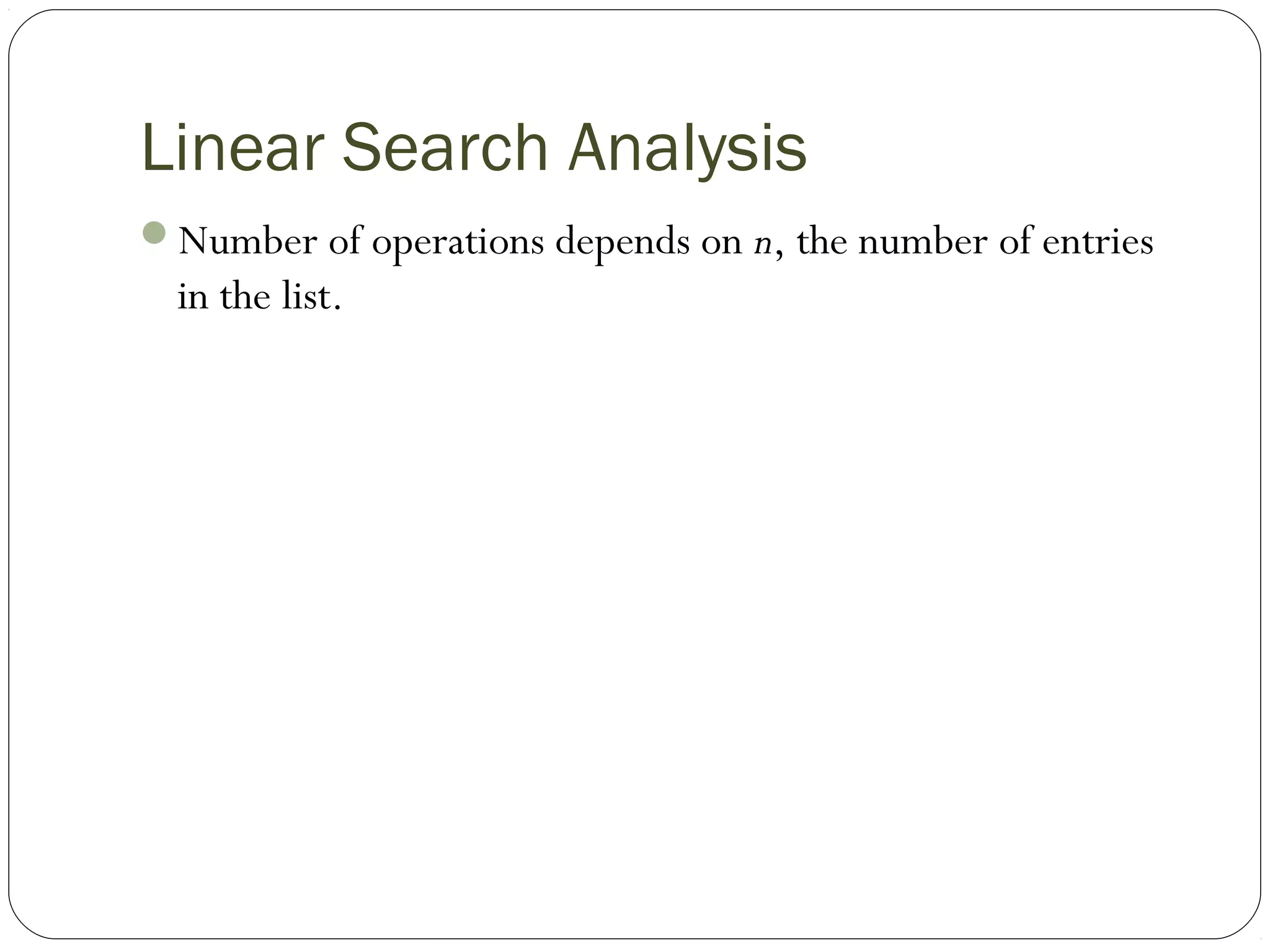
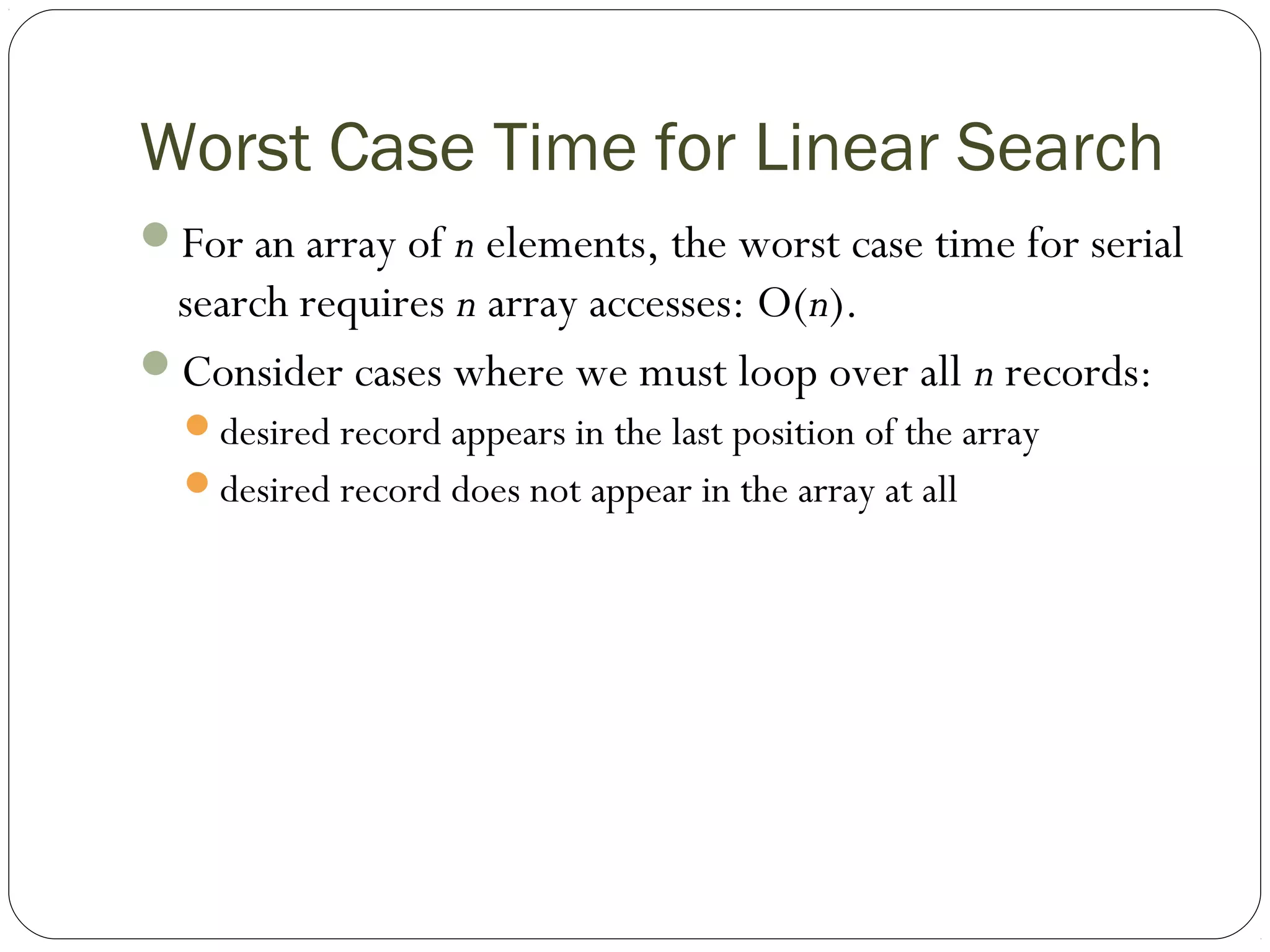
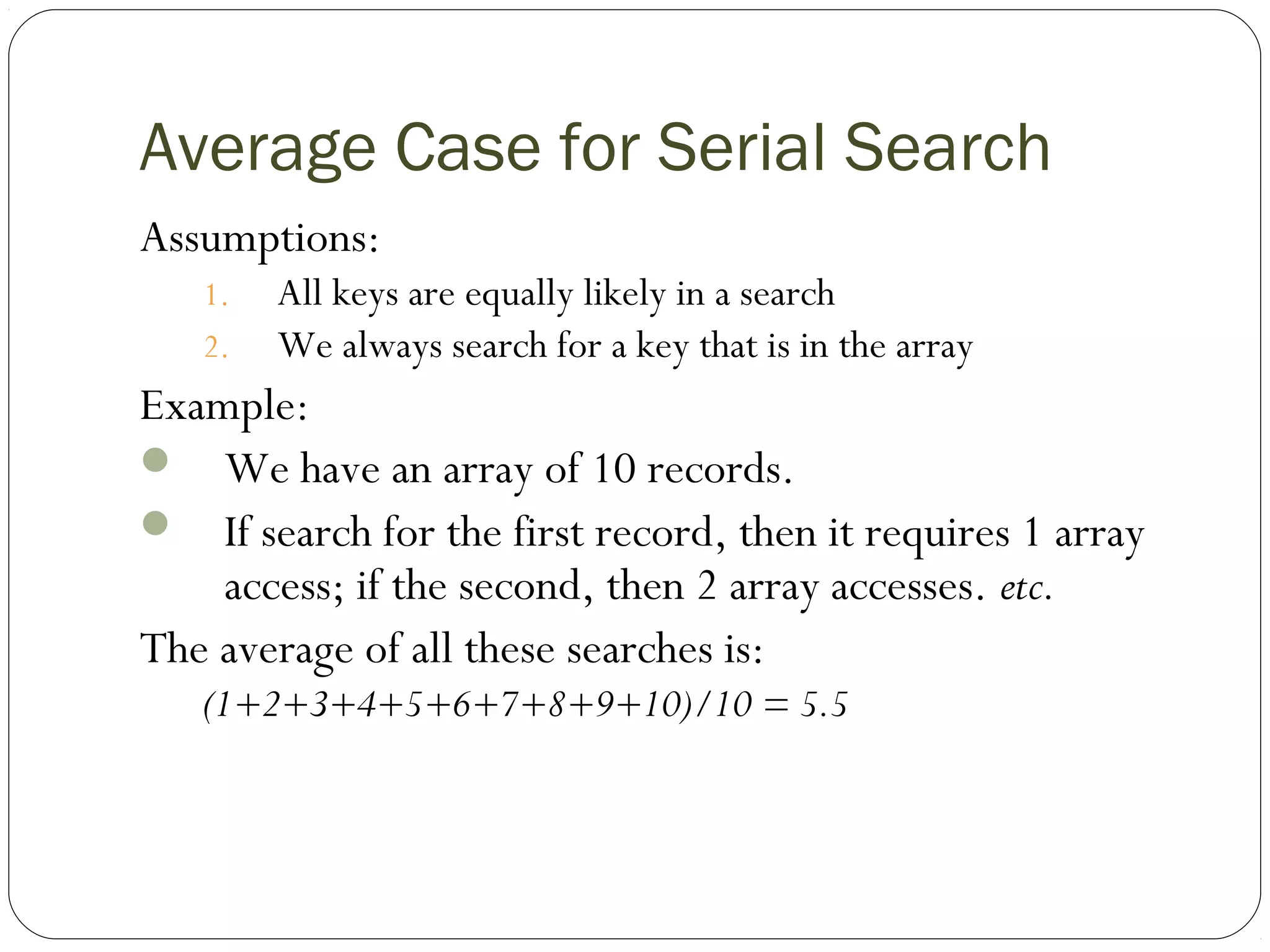
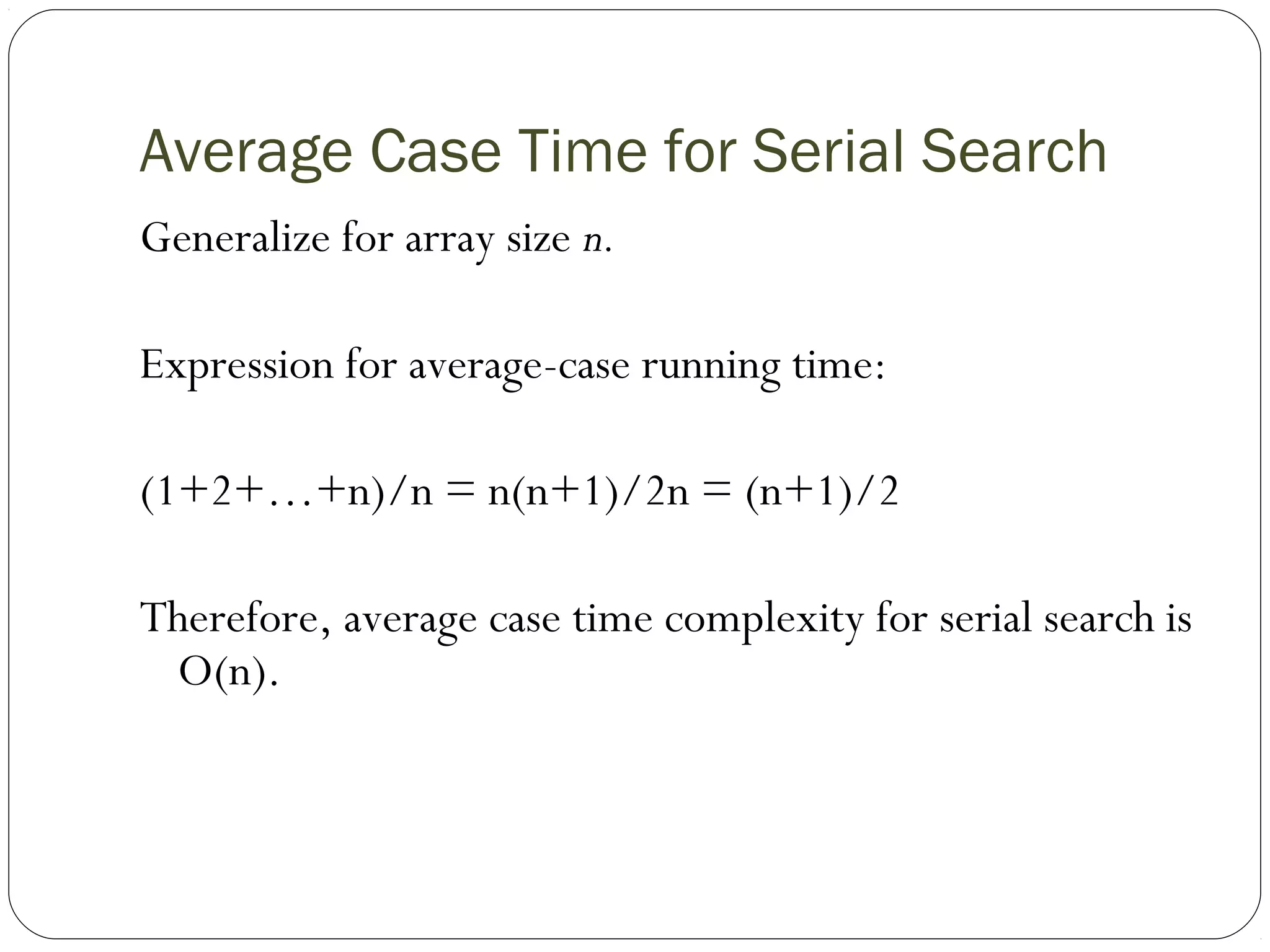
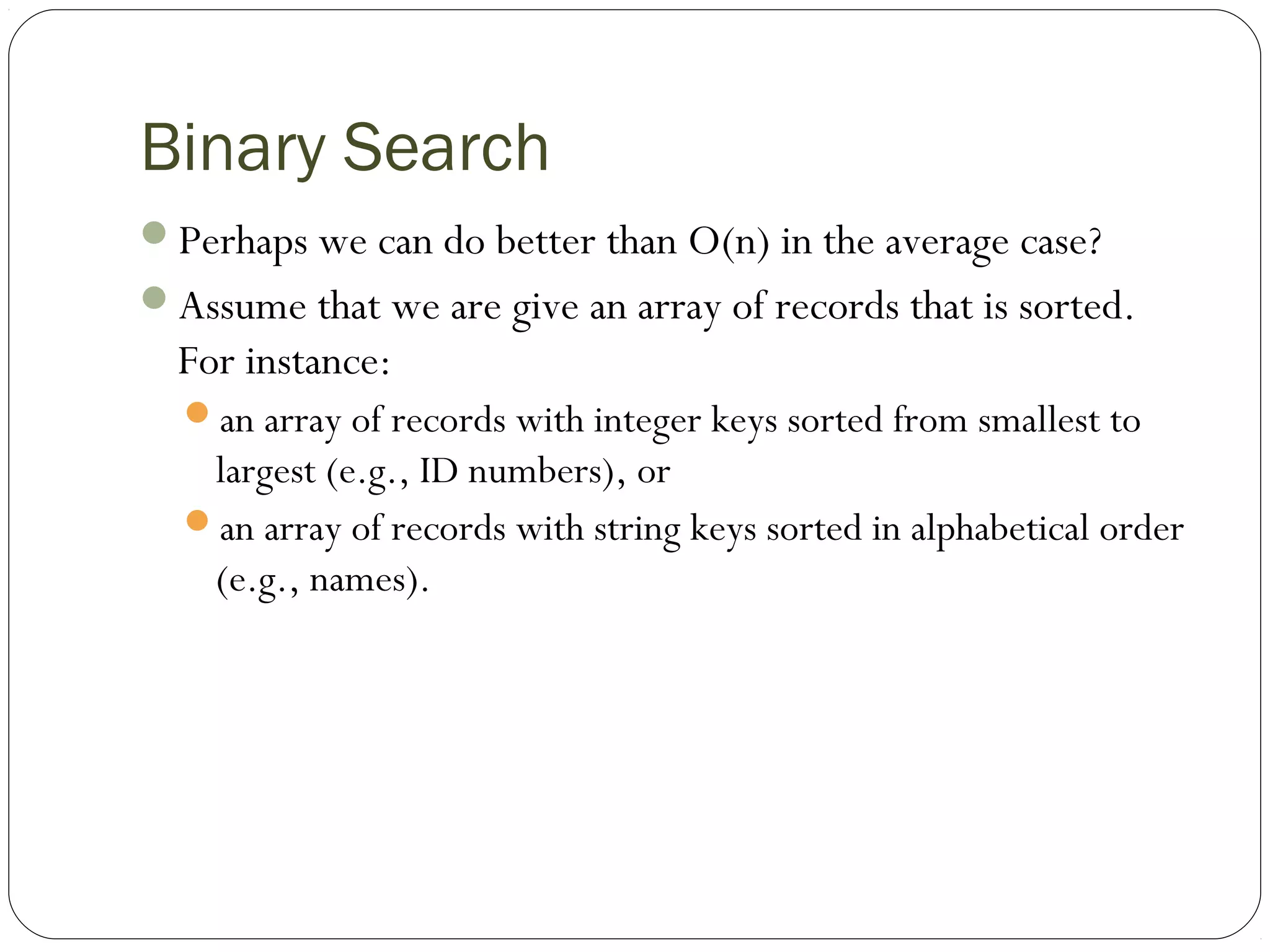
![Binary Search
[ 0 ] [ 1 ]
Example: sorted array of integer keys. Target=7.
3 6 7 11 32 33 53
[ 2 ] [ 3 ] [ 4 ] [ 5 ] [ 6 ]](https://image.slidesharecdn.com/searchingalgorithm-160724161121/75/Searching-algorithm-9-2048.jpg)
![Binary Search
[ 0 ] [ 1 ]
Example: sorted array of integer keys. Target=7.
3 6 7 11 32 33 53
[ 2 ] [ 3 ] [ 4 ] [ 5 ] [ 6 ]
Find approximate midpoint](https://image.slidesharecdn.com/searchingalgorithm-160724161121/75/Searching-algorithm-10-2048.jpg)
![Binary Search
[ 0 ] [ 1 ]
Example: sorted array of integer keys. Target=7.
3 6 7 11 32 33 53
[ 2 ] [ 3 ] [ 4 ] [ 5 ] [ 6 ]
Is 7 = midpoint key? NO.](https://image.slidesharecdn.com/searchingalgorithm-160724161121/75/Searching-algorithm-11-2048.jpg)
![Binary Search
[ 0 ] [ 1 ]
Example: sorted array of integer keys. Target=7.
3 6 7 11 32 33 53
[ 2 ] [ 3 ] [ 4 ] [ 5 ] [ 6 ]
Is 7 < midpoint key? YES.](https://image.slidesharecdn.com/searchingalgorithm-160724161121/75/Searching-algorithm-12-2048.jpg)
![Binary Search
[ 0 ] [ 1 ]
Example: sorted array of integer keys. Target=7.
3 6 7 11 32 33 53
[ 2 ] [ 3 ] [ 4 ] [ 5 ] [ 6 ]
Search for the target in the area before midpoint.](https://image.slidesharecdn.com/searchingalgorithm-160724161121/75/Searching-algorithm-13-2048.jpg)
![Binary Search
[ 0 ] [ 1 ]
Example: sorted array of integer keys. Target=7.
3 6 7 11 32 33 53
[ 2 ] [ 3 ] [ 4 ] [ 5 ] [ 6 ]
Find approximate midpoint](https://image.slidesharecdn.com/searchingalgorithm-160724161121/75/Searching-algorithm-14-2048.jpg)
![Binary Search
[ 0 ] [ 1 ]
Example: sorted array of integer keys. Target=7.
3 6 7 11 32 33 53
[ 2 ] [ 3 ] [ 4 ] [ 5 ] [ 6 ]
Target = key of midpoint? NO.](https://image.slidesharecdn.com/searchingalgorithm-160724161121/75/Searching-algorithm-15-2048.jpg)
![Binary Search
[ 0 ] [ 1 ]
Example: sorted array of integer keys. Target=7.
3 6 7 11 32 33 53
[ 2 ] [ 3 ] [ 4 ] [ 5 ] [ 6 ]
Target < key of midpoint? NO.](https://image.slidesharecdn.com/searchingalgorithm-160724161121/75/Searching-algorithm-16-2048.jpg)
![Binary Search
[ 0 ] [ 1 ]
Example: sorted array of integer keys. Target=7.
3 6 7 11 32 33 53
[ 2 ] [ 3 ] [ 4 ] [ 5 ] [ 6 ]
Target > key of midpoint? YES.](https://image.slidesharecdn.com/searchingalgorithm-160724161121/75/Searching-algorithm-17-2048.jpg)
![Binary Search
[ 0 ] [ 1 ]
Example: sorted array of integer keys. Target=7.
3 6 7 11 32 33 53
[ 2 ] [ 3 ] [ 4 ] [ 5 ] [ 6 ]
Search for the target in the area after midpoint.](https://image.slidesharecdn.com/searchingalgorithm-160724161121/75/Searching-algorithm-18-2048.jpg)
![Binary Search
[ 0 ] [ 1 ]
Example: sorted array of integer keys. Target=7.
3 6 7 11 32 33 53
[ 2 ] [ 3 ] [ 4 ] [ 5 ] [ 6 ]
Find approximate midpoint.
Is target = midpoint key? YES.](https://image.slidesharecdn.com/searchingalgorithm-160724161121/75/Searching-algorithm-19-2048.jpg)
